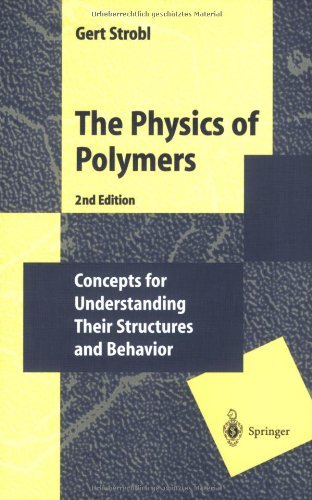
By Yurii Kashlev
Kinetics and Thermodynamics of quick debris in Solids examines the kinetics and non-equilibrium statistical thermodynamics of speedy charged debris relocating in crystals in numerous modes. It follows a line of study very diversified from conventional methods of creating a conception of radiation results, which supplies a merely mechanistic interpretation of particle movement. by contrast, this e-book takes under consideration the thermodynamic forces as a result of separation of the thermodynamic parameters of the subsystem of debris ("hot" atoms) at the parameters of the thermostat (electrons and lattice), as well as protecting many of the mechanisms of collisions.
Topics Include:
- Construction of an area kinetic equation of Boltzmann variety for quick debris interacting with the conduction electrons and lattice vibrations, at the foundation of the rules of Bogolyubov’s kinetic theory
- Calculation of the equilibrium strength and angular distributions of quickly debris at a intensity of the order of coherence size, and the evolution of particle distribution with expanding intensity of penetration of the beam
- Calculation of transverse quasi-temperature of channeled debris with the heating of the beam within the technique of diffusion of debris within the area of transverse energies, in addition to cooling the beam via a dissipative process
- Research within the framework of non-equilibrium thermodynamics of the comfort kinetics of random debris, together with the thermodynamics of positronium atoms relocating in insulators below laser irradiation
- Analysis of the kinetics of scorching companies in semiconductors and thermalization of sizzling companies, in addition to the calculation of the statistical distribution of ejected atoms shaped through the displacement cascade
The e-book units a brand new course of the idea of radiation results in solids—non-equilibrium statistical thermodynamics of speedy particles—and goals to concentration and reduction the reader within the research of recent components of research during this quarter.
Read or Download Kinetics and Thermodynamics of Fast Particles in Solids PDF
Similar solid-state physics books
Read e-book online The Physics of Polymers: Concepts for Understanding Their PDF
Polymer Physics is likely one of the key lectures not just in polymer technological know-how but in addition in fabrics technological know-how. Strobl provides in his textbook the weather of polymer physics to the mandatory volume in a really didactical means. His major concentration lays at the techniques of polymer physics, now not on theoretical features or mere actual tools.
Get IUTAM Symposium on Segregation in Granular Flows: PDF
Segregation is a pervasive phenomenon wherein a flowing granular mass which include debris with varied actual houses turns into spatially inhomogeneous. within the commercial quarter that bargains with the dealing with and processing of bulk solids, this non-uniformity is very bad due to the fact mixture homogeneity is usually a stringent requirement of such a lot items.
Download e-book for kindle: Oscillations and Waves: An Introduction by Richard Fitzpatrick
Bridging lower-division physics survey classes with upper-division physics classes, Oscillations and Waves: An advent develops a unified mathematical idea of oscillations and waves in actual platforms. Emphasizing physics over arithmetic, the writer comprises many examples from discrete mechanical, optical, and quantum mechanical structures; non-stop gases, fluids, and elastic solids; digital circuits; and electromagnetic waves.
Read e-book online Spectroscopy of Condensed Media: Dynamics of Molecular PDF
Spectroscopy of Condensed Media: Dynamics of Molecular Interactions discusses using molecular spectroscopy (including nuclear magnetic resonance [NMR] and nonlinear optical spectroscopy) in dynamic tactics in condensed molecular structures. The ebook reports dating among transition chance and the time-correlation functionality of an isotropic electrical dipole method, linear-response thought, and light-weight scattering caused by the translational movement of molecules in fluids.
- Vibronic Interactions and the Jahn-Teller Effect: Theory and Applications: 23 (Progress in Theoretical Chemistry and Physics)
- Waves in Metamaterials
- An Introduction to Integrable Techniques for One-Dimensional Quantum Systems (Lecture Notes in Physics)
- Experiments and Numerical Simulations of Turbulent Combustion of Diluted Sprays: TCS 3: Third International Workshop on Turbulent Spray Combustion: 19 (ERCOFTAC Series)
- Integrated 60GHz RF Beamforming in CMOS (Analog Circuits and Signal Processing)
Additional resources for Kinetics and Thermodynamics of Fast Particles in Solids
Sample text
Kinetics and Thermodynamics of Fast Particles in Solids by Yurii Kashlev
by Daniel
4.2



